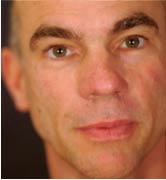|

Exploring the intersection of the personal/political with somatic and expressive practices focusing on breath and vocalization for personal and social empowerment
More info on EAR (Embodied Activism for Renewal) to the Ground Productions here
|

Somatics In Action
The Socially Conscious Body with Carol Swann & Jamie McHugh
When: Sat., June 3, 2017
Where: The Finnish Hall, 1970 Chestnut St., Berkeley, CA. 94702
Time: 2:00-5:30pm
Cost: $25-$60 Sliding scale. To REGISTER: send your payment via Paypal to: naturebeingart@gmail.com
You will receive confirmation and a logistics letter upon receipt of payment. Please call or write Carol for questions: carolswann@aol.com , 510-524-5013
Format: In this special session, Jamie McHugh will lead an experiential session followed by a short theoretical overview of “The Socially Conscious Body” by Carol Swann. Carol & Jamie will then facilitate a participatory conversation to evoke your perspectives and experiences on this theme. These dialogues are designed to encourage co-operative learning, elicit collective wisdom, and serve community networking. Everyone welcome; no performance or somatics background required.
Experiential Session: Breathing Room in Turbulent Times
“Silence equals Death”, according to the activist group Act Up. “Silence is Golden” is a timeworn proverb, and can appear to reflect the Buddhist principle of Noble Silence. How do we reconcile the implicit paradox of these two truths in these turbulent times? How does having a voice and expressing ourselves in the commons interface with contemplative practice and equanimity? In this session, we will explore the intersection of the personal and the political with somatic and expressive practices focusing on breath and vocalization for personal and social empowerment.
Carol Swann is a teacher, private practitioner, facilitator, co-director, performer and activist. Her work is focused on contributing to a more socially just and connected world. She is a co-founder, director/faculty of Moving On Center-School of Participatory Arts and Somatics Research, bridging Somatics and the Performing Arts for Social Change (1994-2017). She has been teaching and performing improvisational movement and vocal related work for over thirty-five years in the U.S., Latin America, Russia, Israel and Europe. She has extensive studies in Body Mind Centering, Laban/Bartenieff Movement Studies, Roy Hart Theater, Theater of the Oppressed and Social Somatics which informs everything does. She maintains a private practice in Somatic therapy, (based in Hakomi and Process Work), Alexander Technique (NASTAT), teaches Voice, The Socially Conscious Body, Authentic Movement, Improvisation, Group Process and Conflict facilitation.
For more on the theory of social somatics:
In the “Socially Conscious Body”, we examine the social body formations, functions and movement patterns in human behavior with an emphasis on transforming, rather than treating degenerative conditions. In this way we work to foster conditions for healthy sustainable social structures and relationships.
By attending to our social body, we are each able to re-organize the way we see ourselves in the world and work for health worldwide.
Constant work on rank, power, and status is necessary. Our embodied understanding of how we are wired to particular ways of being across rank and privilege evolve. Social somatics believes that rank and power shifts happen at a systemic level when first transformed at a relationship level.
SOMATICS is the practice of paying attention to or tracking sensations and signals (gathering information) within the body and that come from the outside that have an impact on the body/mind and making choices about what to do with this awareness. All somatic approaches are concerned with integrating the whole person, the Body, Mind and Spirit.
There are many contemporary Somatic “Systems” that have been developed in the last century with which to study one’s body/mind awareness and learn to “re-pattern” habits of being that exist in the physical, psychological/emotional and social realms of our humanness. These systems include four approaches to learning somatics: Bodywork, Movement Repatterning, Body Psychotherapy, and Social Somatics. Some of these systems are, the Alexander Technique, Laban/Bartenieff Movement Studies, Feldenkrais Awareness Through Movement, Body-Mind Centering, Hakomi Method, Process Work, Ideokinesis, Generative Somatics, Somatic Experiencing, and many more.
SOMATICS is an old discipline with its roots in the ancient healing practices and cultures of Asia, Central Asia, Africa and the Americas. In the West, Thomas Hanna, a neurological practitioner, in 1976 coined the term “Somatics” as a rediscovery of this work. Generally, somatics is educational, non-hierarchical, and horizontal learning paradigm where knowledge and skill is co-constructed between students and teachers. As practitioners, we believe the power to change exists within the students or clients own wisdom and inner knowing. As teachers and therapists we see ourselves as facilitators to students finding their own truth. Our aim is to “empower” the individual and to uncover the inherent wisdom or intelligence of the body. We believe the body-mind can remember (its original organization) as well as re-pattern because we are “living somas” and we have the ability to constantly re-create ourselves.
SOCIAL SOMATICS is a newer (yet inherent) system to be named. It operates on the understanding that the individual “soma” is not separate from its experience in the social context that shapes it. The exploration of Social Somatics is the relationship between our inner embodied experiences and the social systems that shape our lives. Unlike conventional somatics, it consciously activates awareness of our social bodies to transform internalized, relational, structural and cultural conditions that oppress us and impede wellness. It focuses on relationship and the integration of the whole with the part, and the part with the whole.
 |
 |

Jamie McHugh
photo by Hilary Nichols
|
 |

